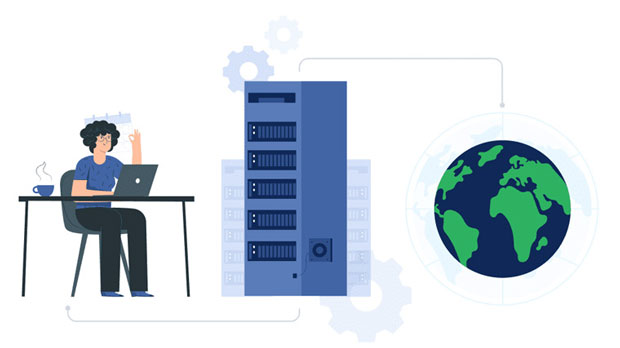In recent years, proxies have become essential tools for online security, anonymity, and bypassing restrictions. socks5 proxies, in particular, offer a high degree of flexibility and efficiency. However, accessing websites protected by services like Cloudflare can sometimes pose challenges, as these security measures often block or limit connections that seem suspicious. This guide will walk you through the process of accessing Cloudflare-protected pages using a socks5 proxy. By understanding both the technical and practical aspects of this method, you’ll be equipped to navigate Cloudflare's security systems effectively while maintaining privacy and security. Introduction to SOCKS5 Proxy and CloudflareBefore diving into the specific steps for accessing Cloudflare-protected pages, it's important to understand what SOCKS5 proxies and Cloudflare are, and why the combination of both can sometimes lead to challenges.SOCKS5 Proxy A SOCKS5 proxy is a type of internet protocol that allows you to route your internet traffic through a remote server. Unlike other types of proxies, SOCKS5 proxies support a wide range of traffic types, including HTTP, HTTPS, and even P2P. It does not alter or inspect your traffic, which makes it faster and more efficient compared to other proxies. SOCKS5 also offers enhanced authentication methods, increasing security by ensuring only authorized users can connect through the proxy.Cloudflare’s Role in Web Security Cloudflare provides a robust security layer for websites, acting as a Content Delivery Network (CDN) and protecting against DDoS attacks, hacking attempts, and other forms of cyber threats. By acting as a middle layer between the user and the site, Cloudflare can block malicious requests and mitigate risks. However, this protective layer sometimes flags certain proxy or VPN IPs as suspicious, causing access issues for users trying to bypass geo-blocking or access a website anonymously.Challenges in Accessing Cloudflare-Protected PagesWhen accessing websites that are shielded by Cloudflare, there are multiple challenges that can arise, especially when trying to use a SOCKS5 proxy. Below are some of the issues you might encounter:1. Cloudflare’s Security Measures Cloudflare uses a series of advanced security measures to ensure that only legitimate traffic accesses the websites it protects. These include CAPTCHA challenges, JavaScript challenges, and even device fingerprinting. If a SOCKS5 proxy is being used, Cloudflare might detect the proxy’s IP address and flag it, prompting additional security measures like CAPTCHA or blocking the request entirely.2. IP Blacklisting Many SOCKS5 proxies are widely used for circumventing geo-restrictions or masking users’ identities. This usage can cause some IP addresses to be blacklisted by Cloudflare. When a SOCKS5 proxy’s IP is flagged as suspicious or part of a known proxy pool, Cloudflare may block it to protect the website from potentially malicious activities.3. Increased Latency Another issue with using SOCKS5 proxies is that they can introduce latency into the connection. As traffic is routed through an intermediary server, this additional step can slow down the connection speed. This can result in timeouts or delays, making the page load slowly or even fail to load completely.Steps to Access Cloudflare-Protected Pages Using SOCKS5 ProxyDespite the challenges, it’s still possible to use a SOCKS5 proxy to access Cloudflare-protected websites. The following steps will guide you through the process.Step 1: Setting Up SOCKS5 Proxy First, you need to set up your SOCKS5 proxy on your system or application. This process will depend on the software you’re using, whether it’s a browser extension, an operating system configuration, or a third-party application. For most users, setting up SOCKS5 on a browser or application involves entering the proxy server's IP address and port number. Ensure that you use a reliable and well-configured socks5 proxy server to avoid common connection issues.Step 2: Verify SOCKS5 Proxy Configuration Once you’ve configured the proxy settings, it’s important to verify that the connection is working correctly. You can do this by checking your IP address through an online service to see if it reflects the SOCKS5 proxy’s IP. If the proxy is working properly, your IP should appear as the proxy server’s address rather than your original one.Step 3: Access Cloudflare-Protected Pages With the SOCKS5 proxy set up and verified, attempt to access the Cloudflare-protected page. If the page loads without issues, you’ve successfully bypassed Cloudflare’s initial security layers. However, if you encounter CAPTCHA challenges or other security measures, you may need to adjust your approach.Step 4: Handle Cloudflare Challenges If Cloudflare presents additional challenges such as CAPTCHAs or JavaScript tests, it may be due to the proxy IP being flagged. In this case, you can either try using a different SOCKS5 proxy IP or employ a different approach. Some advanced tools or techniques can help you pass Cloudflare's checks without revealing your original IP, but these methods may require more technical expertise.Step 5: Using a Rotating SOCKS5 Proxy (Optional) To further improve the chances of bypassing Cloudflare’s security, consider using a rotating SOCKS5 proxy. These proxies automatically switch between different IP addresses, reducing the risk of encountering blocked IPs. This method can help ensure that your connection remains undetected and less likely to trigger Cloudflare’s security filters.Best Practices for Using SOCKS5 Proxies with CloudflareWhile accessing Cloudflare-protected sites using SOCKS5 proxies is certainly possible, there are several best practices you should follow to increase your chances of success and avoid encountering issues.1. Use Residential or Private SOCKS5 Proxies Instead of relying on public proxies or free SOCKS5 proxies, which are often flagged by security services, consider using residential or private proxies. These proxies use IP addresses that are less likely to be associated with malicious activity, providing a safer and more stable connection to Cloudflare-protected sites.2. Avoid High-Risk IPs Some IPs are more likely to be flagged by Cloudflare, especially those that are associated with known VPNs, proxies, or data centers. When selecting a SOCKS5 proxy, avoid high-risk IPs and choose ones that are less likely to trigger Cloudflare’s security mechanisms.3. Ensure Proper Proxy Configuration Ensure that your SOCKS5 proxy is configured properly to avoid issues with latency or connection errors. Double-check the IP address, port, and authentication settings to confirm that everything is set up correctly.4. Monitor for IP Blocking If you are accessing Cloudflare-protected sites regularly, monitor your proxy’s IP for any signs of blocking or flagging. By rotating proxies or switching IP addresses frequently, you can avoid prolonged access issues.ConclusionIn summary, accessing Cloudflare-protected websites via SOCKS5 proxies is possible, but it requires a solid understanding of both the technical setup and the potential challenges posed by Cloudflare’s security systems. By following the steps outlined in this guide and implementing best practices such as using reliable proxies and handling security challenges effectively, you can successfully bypass Cloudflare’s protections and gain access to the websites you need. Whether for privacy, security, or circumventing geo-restrictions, a well-configured SOCKS5 proxy remains an invaluable tool for navigating the web securely and efficiently.
Jan 17, 2025




























































